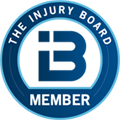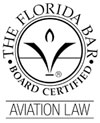June 24, 2014
WASHINGTON – In a Board meeting held today, the National Transportation Safety Board determined that Asiana flight 214 crashed when the airplane descended below the visual glidepath due to the flight crew’s mismanagement of the approach and inadequate monitoring of airspeed. The Board also found that the complexities of the autothrottle and autopilot flight director systems, and the crew’s misunderstanding of those systems, contributed to the accident.
On July 6, 2013, about 11:28 a.m. (PDT), the Boeing 777 was on approach to runway 28L at San Francisco International Airport in San Francisco, California when it struck the seawall at the end of the runway. Three of the 291 passengers died; 40 passengers, eight of the 12 flight attendants, and one of the four flight crewmembers received serious injuries. The other 248 passengers, four flight attendants, and three flight crewmembers received minor injuries or were not injured. The impact forces and a postcrash fire destroyed the airplane.
The NTSB determined that the flight crew mismanaged the initial approach and that the airplane was well above the desired glidepath as it neared the runway. In response to the excessive altitude, the captain selected an inappropriate autopilot mode and took other actions that, unbeknownst to him, resulted in the autothrottle no longer controlling airspeed.
As the airplane descended below the desired glidepath, the crew did not notice the decreasing airspeed nor did they respond to the unstable approach. The flight crew began a go-around maneuver when the airplane was below 100 feet, but it was too late and the airplane struck the seawall.
“In this accident, the flight crew over-relied on automated systems without fully understanding how they interacted,” said NTSB Acting Chairman Christopher A. Hart. “Automation has made aviation safer. But even in highly automated aircraft, the human must be the boss.”
As a result of this accident investigation, the NTSB made recommendations to the Federal Aviation Administration, Asiana Airlines, The Boeing Company, the Aircraft Rescue and Firefighting Working Group, and the City of San Francisco.
These recommendations address the safety issues identified in the investigation, including the need for reinforced adherence to Asiana flight crew standard operating procedures, more opportunities for manual flying for Asiana pilots, a context-dependent low energy alerting system, and both certification design review and enhanced training on the Boeing 777 autoflight system.
The recommendations also address the need for improved emergency communications, and staffing requirements and training for aircraft rescue and firefighting personnel.
“Today, good piloting includes being on the lookout for surprises in how the automation works, and taking control when needed,” Hart said. “Good design means not only maximizing reliability, but also minimizing surprises and uncertainties.”
A synopsis of the NTSB report, including the probable cause, findings, and a complete list of the 27 safety recommendations, is available at http://www.ntsb.gov/news/events/2014/asiana214/abstract.html. The full report will be available on the website in several weeks.

 June 24, 2014 in
June 24, 2014 in 


